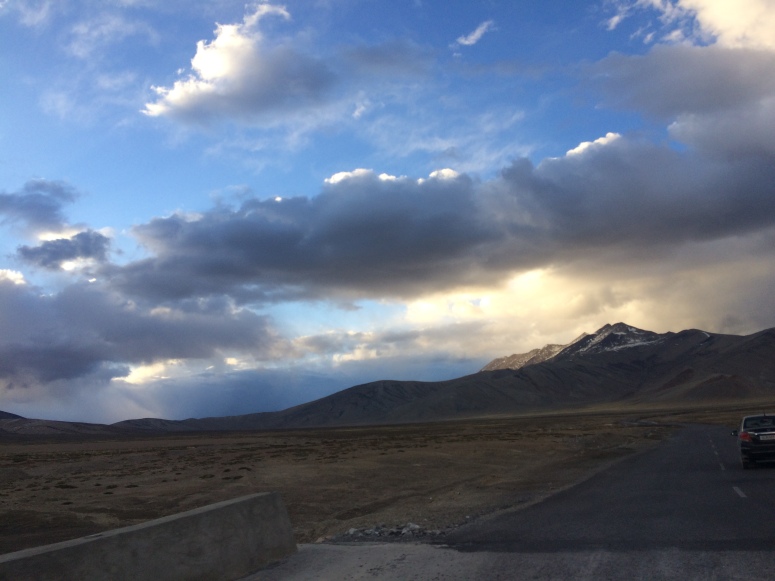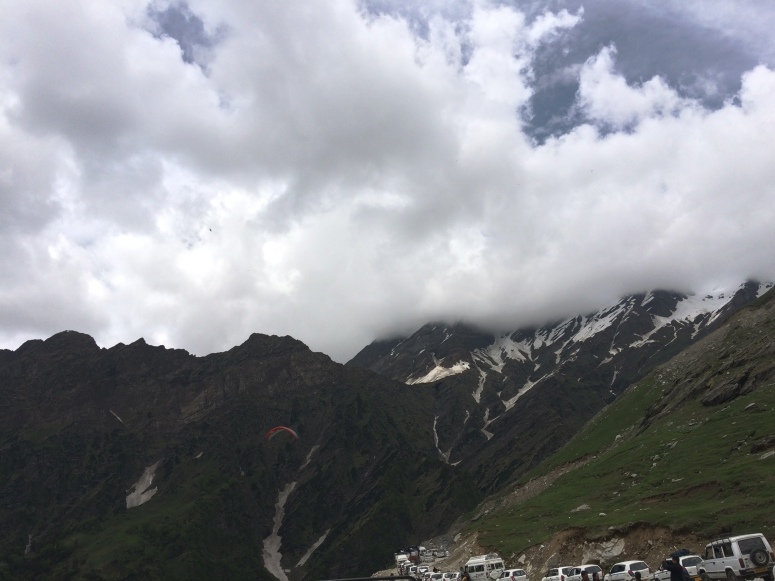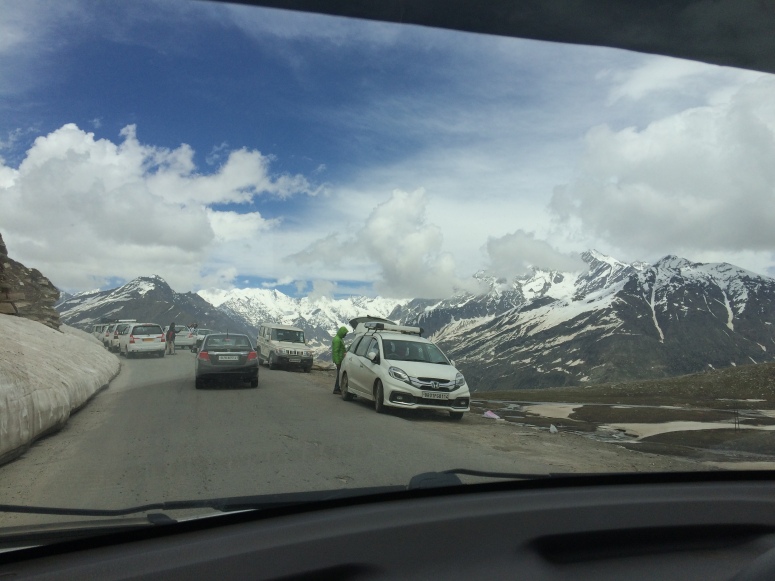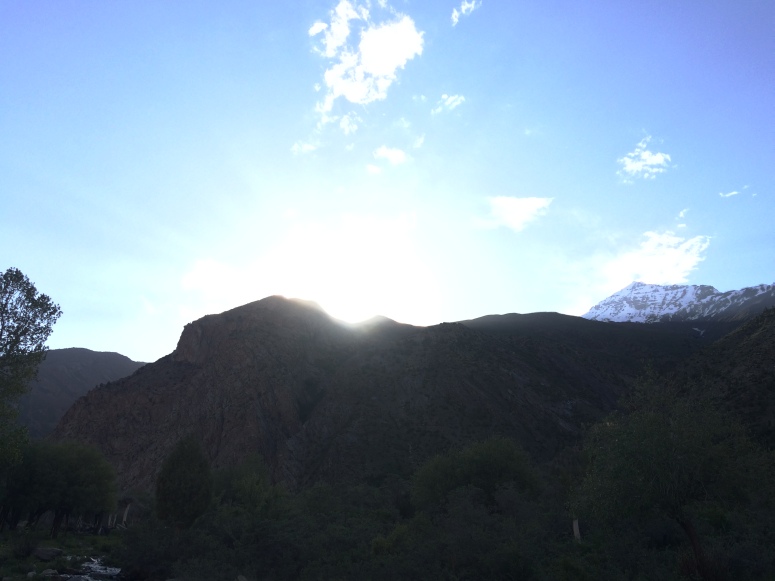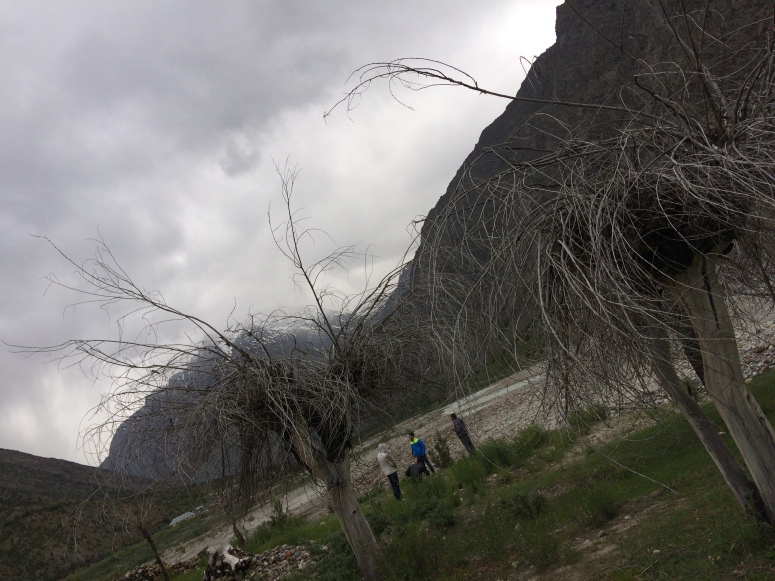June 2016
We left from Delhi on 6th June, and attended my awesome friend’s wedding (shoutout to Ranaji’s family and Sunny in particular- we will get to him in a moment) in Kullu. Next up, we crossed Rohtang and stayed in great accommodations provided by our friend-to-be-married in Keylong.
The view till then had been spectacular, but we had a choice to make about our onward journey. At Abhi’s wedding, we were lightly cautioned against taking our reliable Honda Amaze to Spiti/Chandertal. Four of our college friends were already in a Traveller, so we parked our car at Koksar and were driven to Kaza.
The ride took the best part of the day, but we arrived in time to take in the sunset. Then began the wait for moonrise, which my trustworthy SkyView app predicted to be around 11:30 pm.
The photos themselves are two dimensional digital reproductions; the sensation of time was visibly suspended as the moon rose and rose, until the town of Kaza was bright with moonlight. I’m irresistibly reminded of the mural painted in white across the valley.
After a good night’s sleep, we loaded ourselves into the traveller and headed to Chandertal. Retracing part of the way we had taken, we re-crossed Losar, and turned towards Chandertal from Batal.
Before I forget, we had underestimated cash expenses in kaza, so we called Sunny and he generously booked places for us at very agreeable rates in his camp at Chandertal. This is the kind of bonhomie one gets to experience in Himachal. Kudos and 🙏🏽😇.
Onward, then, to Chandertal. We made good progress mainly due to Sanjay, our guide and driver. His experience came in really handy on the loose roads leading to Chandertal. On the way, a couple were stranded with a faulty bullet. We took them along and ensured they had a tent when we crossed the campsite along the way.
Oh, man, the steep drive to the final parking lot is DUSTY! Stay slow to avoid getting caked in red soil like Nitin.
The stretch leading to Chandertal is about a kilometre or so. Along the way are the lower lakes and a view of the lake-river system down through the valley. It is best to reach as early as possible: you need time to emulate what 4 of us did ahead.
The green banks of grass pale in comparison to the dark green water of the moon lake. After splashing around a bit, Pradeep, Nimesh, Nitin and I embarked on the circumambulation. It is an hour of utmost beauty, and the way is (or was, thankfully for us at the time) easy. Melting snow feeds the estuary-like beginning of the lake, and on the other side are the ubiquitous pyramids of flat stones piled atop each other. We added our own, with the setting behind snow capped peaks far down towards the west. It was only in January 2017 that I went higher: Bandipur in Nepal, near Pokhara and the Annapurna Dhaulagiri range. Come to think of it, that’s my twitter banner pic these days! But I digress.
We climbed down in the twilight, and were warmly received by our host – I forgot his name, but I’m sure we will remember it when our group gets together and conversations lead hither. A great dinner later, we stayed to watch the Milky Way and the Big Dipper revolve into view. Pranay took great long exposure shots of the bright moonlit valley and sky.
It is inadvisable to attempt an overnight camp at Chandertal itself, unless you’re an experienced outdoors person. Even then, take care whenever you find yourselves in the remote reaches of the Himalayas!
Next morning we returned, picked the couple’s bullet (more like rolled it downhill) and reached Manali in the evening. Of course, the Amaze reached slightly earlier due to traffic on Rohtang pass. We retired to old Manali and regrettably returned to Delhi’s heat the next day.





